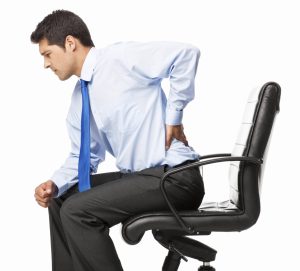With all the buzz about opioid addiction being an epidemic in this country, it’s disconcerting that those seeking relief from chronic pain symptoms without turning to narcotic drugs are hard pressed to find support in the Western medicine model of treatment.
It seems that the prescription pad continues to be the first line of defense. What patients need is guidance in finding a path to wellness and a health care team who will adequately address their pain-relief needs in a holistic way. At the very least, patients need more follow-up and consistent management of their prescription drug use. Opioid addiction is a complex medical and social problem with many varied and influencing factors, but for now, let’s focus on the medical aspect.

Opioids as a quick fix?
Depending upon the situation, doctors may first recommend anti-inflammatories or over-the-counter (OTC) analgesics in lieu of prescription pain killers. This attempts to reduce a person’s complaint of pain and offer the most immediate relief without contributing to the opioid and heroine epidemic currently blasting across this country. It’s like an out of control forest fire, taking with it tens of thousands of lives per year.
Long-term effects of opioid use
Researchers have found that prolonged use of even OTC pain-relievers and anti-inflammatories like these can cause kidney and liver damage, ulcers, and a host of other side-effects, leading to the need for further medical intervention.
In more serious or acute cases, something stronger may be needed to alleviate pain, but prolonged use of opioids should be a last resort, not a first line of defense treatment approach for everyone who complains of pain. Even more importantly, opiates should not be the standard treatment for chronic pain, as the risk and results of addiction far outweigh the short-term benefit.
The alternative to opioids?
If instead of pain medication and anti-inflammatory drugs, patients were offered a combination of interventions including:
- Acupuncture
- Massage
- Physical therapy
- Osteopathy
- Naturopathy/Homeopathy
- Chiropractic
Perhaps there would be fewer addiction issues and greater success with long term care of patients in need of pain management. These modalities have all been proven to significantly reduce or treat pain symptoms with little to no side-effects, and often lead to improved function and better long-term outcomes.
We all suffer indirectly
Without treating the whole person or addressing the underlying contributing factors to pain (bio-mechanical dysfunction, repetitive stress, psycho-emotional issues, diet and nutrition, etc.), I fear that successful pain management will continue to elude consumers and health care providers. When the system fails, everyone suffers. The cost to society in terms of medical expenses, lost income, compromised quality of life, and strain on interpersonal relationships is difficult to measure and should not be underestimated.
If you’ve ever lived with a chronic pain patient, you know first-hand that the patient is not the only one who suffers. Drug addiction only compounds the challenges for these families. The drastic rise in overdose deaths from prescription painkillers is a clear warning that opiates are not the best answer to treating and managing pain.
Prevention starts with you
1. Promoting mindfulness
2. Personal responsibility
3. Body awareness
4. Self-care education
Prevention is our best line of defense. Most people will wait weeks if not months before seeking medical treatment for chronic conditions that may have been avoided entirely with early intervention.
Having an ergonomic assessment of your work station, working with a personal trainer to stay fit, flexible, and strong. Receiving massages on a regular basis to address muscle imbalances before they become problematic, can mitigate many orthopedic conditions, including tendonitis, carpal tunnel syndrome, and neck and back problems. Taking yoga classes, Pilates, or other “body awareness” type training classes can give people the tools they need to not only prevent injury, but treat it effectively.

We can’t completely eliminate car accidents, illness, or injuries that lead to chronic pain. Starting with a healthy body, mind, spirit and attitude can go miles toward helping consumers navigate their way back to health if worst case scenarios occur. Taking personal responsibility for your health and wellness are at the core of choosing a healthcare team and pain management path that’s right for you.
Isn’t it time to stand up for your life?
 PJ Sharon, PTA, LMT, CPFT
PJ Sharon, PTA, LMT, CPFT
Owner of ABSolute Fitness and Therapeutic Bodywork in East Granby, CT.
In addition to authoring award winning young adult novels she recently wrote Overcome your Sedentary Lifestyle, a holistic living, self-help book, to get people moving toward a more balanced and active lifestyle based upon 25 years of experience in the health & fitness industry. In her free time, PJ can be found kayaking in the Berkshire Hills of Massachusetts, and renovating an old farmhouse with the love of her life. Find out more about her here.
Personal Trainers – check out Preventing Back Pain at Work for more tips on how you can help reduce the need for opoid use!
Guest authors offer experience and educational insights based on their specific area of expertise. These authors are contributing writers for the NFPT blog because they have valuable information to share with NFPT-CPTs and the fitness community at-large. If you are interested in contributing to the NFPT blog as a guest, please send us a note expressing your interest and tell us how you can contribute valuable insights to our readers. We look forward to hearing from you! Send to editor@nfpt.com

